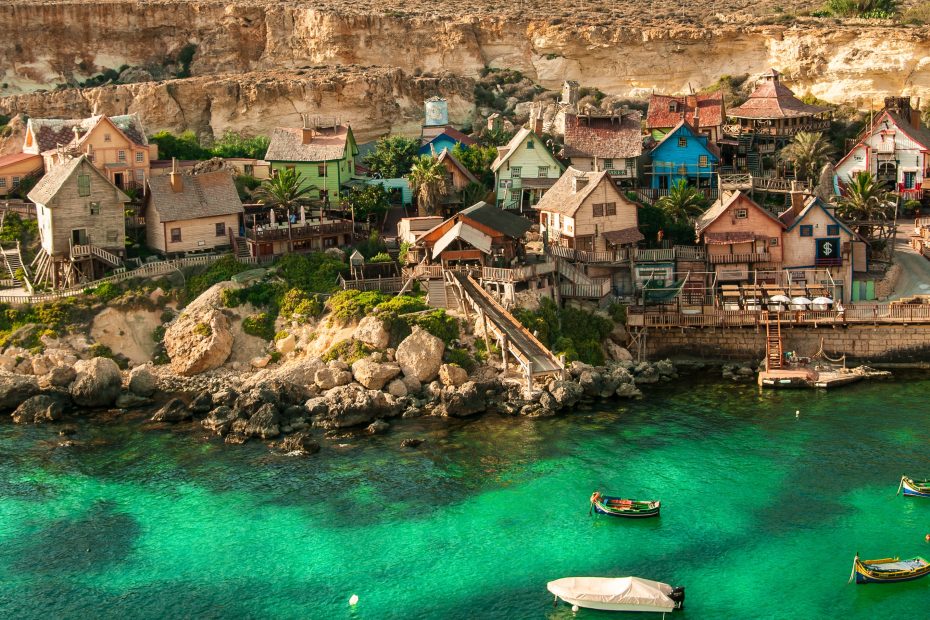Table of Contents
Introduction
The Maltese Islands have been inhabited and dominated by various civilizations for over 7,000 years. This has led to an evolution of architectural styles spanning millennia, from ancient temple ruins to contemporary buildings. The architecture reflects Malta’s rich and diverse cultural history, on full display for visitors to appreciate.
Ancient Ruins
Megalithic Temples
Malta has several well-preserved megalithic temples built between 3600 and 2500 BC. These include the UNESCO World Heritage sites of Ġgantija, Mnajdra, Tarxien, and more. The temples feature intricate stone walls, rooms, altars, libation holes, and decorations.
Cart Ruts
Unique parallel grooves called cart ruts are also relics from the prehistoric era. These mysterious tracks carved in the limestone are believed to have been created by wheeled carts but their exact purpose remains unclear.
Roman Villa
In Rabat, the Roman Villa dates back to the 1st century BC. Its ruins include detailed mosaic floors, courtyards, fountains, and other features that provide insight into life during the Roman period.
Medieval Era
Arabic Architecture Influences
Arabic rule in the Middle Ages left its mark through domes, arches, courtyards, and other design elements. The Palazzo Falson Historic House Museum incorporates these features.
Fortified Cities
Medieval cities like Mdina and Birgu were fortified with high walls, gates, and castles. They showcase a mixture of Norman, Gothic, and Baroque styles.
Baroque Additions
Many medieval buildings were given ornate Baroque facades, altars, and internal carvings in the 17th and 18th centuries. The St. Paul’s Cathedral interior is a prime example.
British Colonial Era
Neoclassical Architecture
When Valletta was established in the 16th century by the Knights of St. John, its grid plan and prestigious buildings drew from Neoclassical design. Examples include the Grandmaster’s Palace and opera house Teatru Rjal.
Auberges and Prominent Buildings
Other British colonial landmarks include the auberges (halls) of the Knights and buildings like the City Gate, Lower Barracca Gardens, and the dynamic Saint John’s Co-Cathedral.
Modern Marvels
Renzo Piano’s City Gate Project
Renowned architect Renzo Piano redesigned the entrance to Valletta in the early 21st century. His contemporary City Gate, Parliament House, and Opera House opened the city both aesthetically and symbolically.
Strait Street Renovations
The winding Strait Street is undergoing major revitalization. Old townhouses are being restored while modern establishments inject youthful energy.
Sleek Modern Apartment Blocks
Beyond the fortified cities, modern high-rise apartment blocks with creative architecture and landscaping are sprouting up, especially in Sliema and St. Julian’s.
Unique Structural Features
Limestone Construction
Malta lacks significant natural resources except limestone. Thus, nearly all buildings incorporate this ubiquitous local stone, giving the architecture homogeneity.
Intricate Stone Decorations
The soft limestoneenabled elaborate carved architectural details on facades, ceilings, niches, balustrades, and religious sculptures.
Balconies and Enclosed Balconies
Streetscapes are characterized by the balconies and enclosed wooden balconies (gallarija) projecting from buildings in shades of green, yellow, and brown.
Domes and Vaulted Ceilings
Domes ranged from soaring cathedral ceilings to smaller customs like street corner niches with miniature domes housing statues of saints.
Architectural Influences
Malta assimilated aspects of Phoenician, Roman, Byzantine, Arab, Norman, Baroque, and British Neoclassical styles. This eclectic blend over three millennia gives Maltese architecture its distinctive local flavor.
Historic Preservation
Malta prioritizes restoration and preservation of its architectural gems. Projects like regenerating Mdina and Valletta revitalize the medieval cities while respecting their heritage. UNESCO recognizes 3 sites.
Conclusion
This Mediterranean island packs an outsized architectural punch. Malta’s historic buildings offer a sweeping overview of the different cultures that have left their imprint. Meanwhile, modern projects add innovative new layers. The melding of ancient ruins and contemporary creations makes the Maltese Islands an enthralling architectural destination.
FAQ
What are Malta’s top UNESCO World Heritage Sites?
Malta has 3 UNESCO World Heritage Sites: The Megalithic Temples of Malta (Ġgantija, Haġar Qim, Mnajdra, Skorba, Ta’ Ħaġrat, and Tarxien temples), the city of Valletta, and the Hal Saflieni Hypogeum underground burial complex.
What is the oldest architectural structure in Malta?
The Ġgantija temples in Gozo, built between 3600 and 3200 BC, are the oldest freestanding manmade structures in the world, predating Stonehenge and the Pyramids.
What materials are most of Malta’s buildings constructed from?
Malta’s buildings are predominantly built of local limestone, which was readily available on the islands. Limestone is easy to carve but also quite soft and prone to erosion.
What are some distinguishing features of Maltese balconies?
Traditional Maltese balconies tend to be enclosed rather than open. Their screens (gallarija) provide shade while allowing ventilation and views. They protrude prominently from the facades with ornate stonework.
How did Arabic architecture influence Maltese buildings?
Arabic rule brought domes, arches, courtyards, gardens, painted ceilings, tiles, and latticework to Maltese design. These Eastern flourishes blended with existing and later Western styles.
